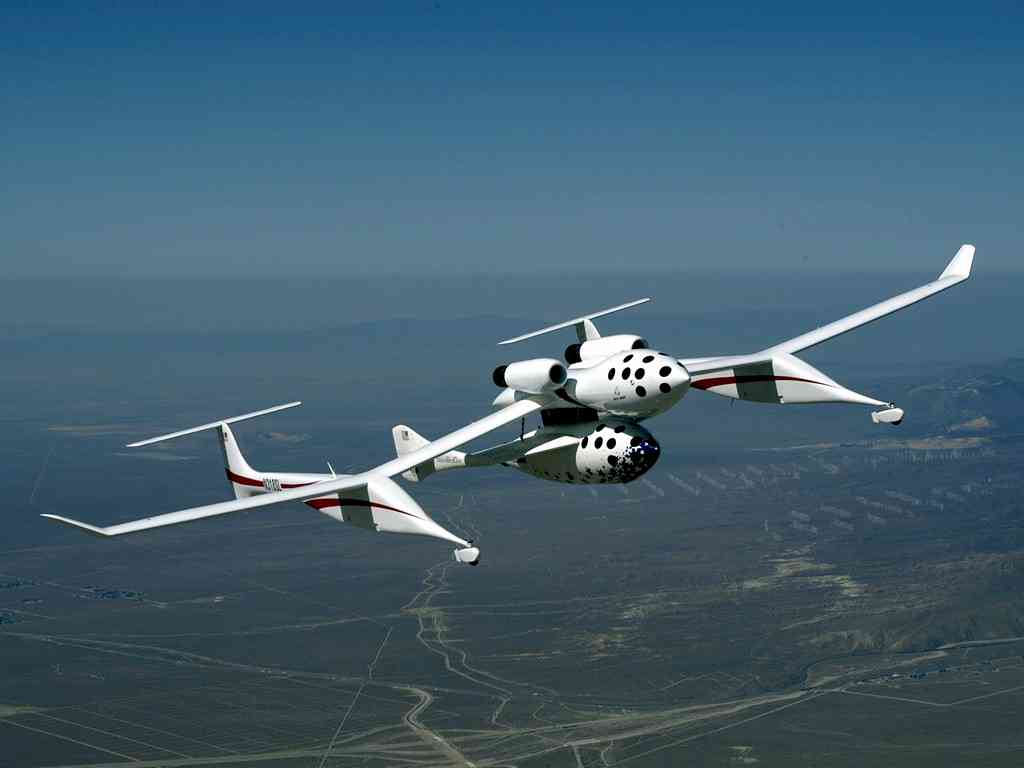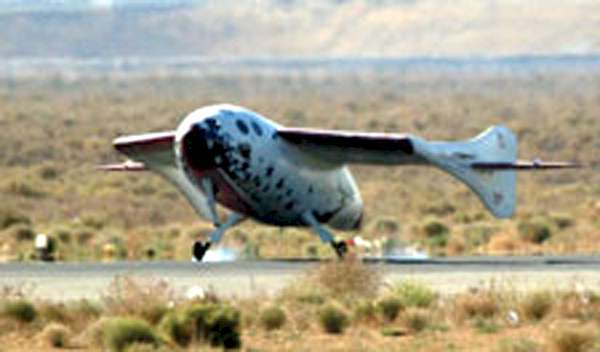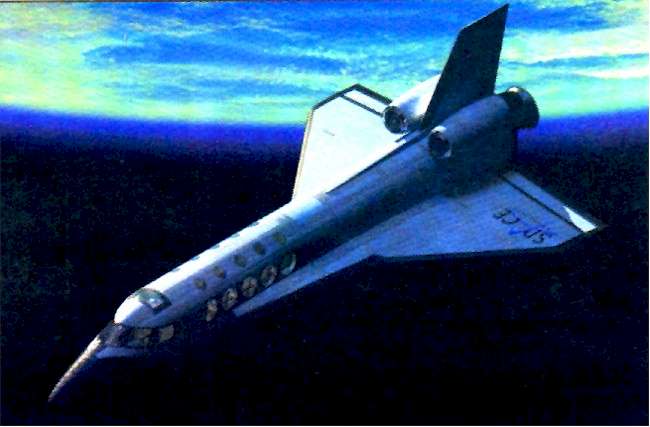Pushing It
Historic Craft Flies Again After 64 Years...the back motors of the ship are just holding it just enough to keep it from... It's burst into flame! Get this, Charlie, get this Charlie... and it's flames now and the frame is crashing to the ground, not quite to the mooring mast... all the humanity, and all the passengers screaming around me... I'm sorry, honestly I can hardly breathe, I'm going to step inside where I cannot see it. Charlie, that's terrible! can't... Listen, folks, I'm going to have to stop for a minute just because I've lost my voice. This is the worst thing I have ever witnessed. - Herb Morrison, reporting for WLS radio, regarding the end of LZ-129, the Hindenburg, 6 May 1937. After Morrison recovered from the initial shock of the
tragedy, he went on to calmly describe what he had witnessed. Listeners in Chicago and across the country didn't hear Morrison's coverage of the disaster until the next day
because his report was not broadcast live from Lakehurst. He and engineer Charlie Nehlsen had been experimenting with field recordings on huge acetate discs. They realised
the gravity of their recordings as they found themselves being followed by German SS officers. After hiding out for a few hours, the two managed to make a clean getaway and get
back across the country to WLS. The chilling account aired the next day on the station and was the first recorded radio news report to be broadcast nationally by NBC.
Maiden voyage: The new Zeppelin airship in southern Germany Berlin - A Zeppelin airship made a commercial flight Wednesday, for the first time since the Hindenburg disaster in 1937. On its maiden trip, the airship carried 12 paying passengers over Lake Constance from the southern German city of Friedrichshafen. About 60 passengers have taken the 1-hour trip since the first flight, said Oliver Schuetz, marketing head of Deutsche Zeppelin Reedereit, the company organising the tourist excursions. The company has flown many Zeppelin test flights in recent years. But Wednesday's marked the first with paying guests since 1937. Costing $275 or more a person, the flights will be available six times daily, five days a week. "Before people go up, they think it's a lot of money, but when they come down, they say it was worth it," Schuetz said. "It is a very historic day. The Zeppelin helped found the air industry, and it disappeared not because of the disaster but because of... faster aircraft." Count Ferdinand von Zeppelin launched the first airship over Lake Constance on the Swiss border in 1900. The Graf Zeppelin went into commercial service in 1928. The 800-foot Hindenburg, only slightly smaller than the Titanic, followed in 1936. A year later, the Hindenburg crashed in Lakehurst, New Jersey. The explosion killed 35 of 97 people aboard and a member of the ground crew. Many Americans listened to a dramatic eyewitness radio account of the crash broadcast live by a reporter who was on the scene for the airship's arrival after its trans-Atlantic flight. The original Deutsche Zeppelin Reedereit was formed by Nazi air minister Hermann Goering as a German national airline in 1935. Goering wanted to use the airships to fly the Nazi swastika logo around the world as a propaganda exercise.
Aside from the crew, the Zeppelin can carry 19 passengers. The last company airship was the Hindenburg, which crashed in 1937. In contrast to the Hindenburg, which was filled with highly explosive hydrogen gas, the new, much smaller craft use non-flammable helium gas. Schuetz said the airships received approval from Germany's Federal Air Traffic Office after being tested.
The ill-fated Hindenburg Source: USA Today Thursday 16 August 2001 from wire reports; photo credit of Zeppelin Associated Press
Big Birds
Can airships make a comeback as heavy lifters? A journey to Brand airfield, some 60km (37 miles) south of Berlin, could almost be a trip back in time. The level-crossing nearby is operated manually. The huge airfield is dotted with 42 hangars, still camouflaged, that once housed Soviet MIGS. And the business of the airfield's new owner, CargoLifter, is the development of giant airships, a means of transport few have taken seriously since the Hindenburg went up in flames in 1937. The time-warp feeling ends when a gigantic space-age dome, 360 metres long and 107 metres high, comes into view. This is the hangar out of which CargoLifter's CL-160 will emerge in 2003. Several companies are convinced that airships are ripe for a comeback, including the venerable Zeppelin Luftschiff-technik, whose new craft recently won clearance to carry passengers, a dozen at a time. CargoLifter's plans, however, are the most monumental. The idea is to carry not people, but cargo: heavy loads, such as turbines, or bulky ones, such as segments of oil refineries. It is a big gamble. The cost of development is E$90m ($505m), says Carl von Gablenz, CargoLifter's chief executive. But once the CL-160 is airborne, the cost of building extra ships should be low. The cost of carrying a load (up to 160 tonnes, at 50 mph) should also be low compared with planes or lorries. Does enough demand exist? The global market for big loads is around 30m tonnes a year. To serve even 10% of that would require 200 airships; Cargo-Lifter could build only four a year in one hangar. "The market is so big," says Mr von Gablenz, "the problem is to build up the capacity." So far, around half of the development costs have been raised. Subsidies paid for half the cost of the hangar (because Brand is in down-at-heel eastern Germany). Investors snapped up private share issues, and an initial public offering last year raised US$96m; CargoLifter is now among Germany's 100 biggest firms by market capitalisation. Despite a weak stockmarket, Mr von Gablenz hopes to raise more money this year. Are his investors backing another Hindenburg? Modern airships are different beasts: they use helium, not flammable hydrogen, and are wrapped in sturdy material. If the CL-160 is successful as well as safe, journalists might one day be able to write about airships without using the H-word. But not yet. Source: The Economist 4 August 2001
Your Ashes in Orbit?It is marvelous indeed to watch on television the rings of Saturn close; and to speculate on what we may yet find at galaxy's edge. But in the process, we have lost the human element; not to mention the high hope of those quaint days when flight would create "one world." Instead of one world, we have "star wars," and a future in which dumb dented human toys will drift mindlessly about the cosmos long after our small planet's dead. - Gore Vidal, Armageddon, "On Flying," 3 October 1987
Celestis makes possible a new choice in truly unforgettable memorial services. Cremated remains can be launched into space, can orbit around the Earth, can fly to the Moon, or travel into deep space. Celestis is the world leader in providing these unique space memorial services. The next Celestis launch - Celestis Earthview 4, The Odyssey Flight - has been postponed by our launch provider. For more information, visit our Launch and Events Updates page. A pioneering geologist will be on board our next launch: Mareta N West (1915 - 1998) Mareta West was the lunar geologist at NASA who determined the crucial site for the first landing on the moon. The Celestis Foundation is pleased to honor her dreams of spaceflight on Celestis Earthview 04. These people rode the first Celestis into space...
What happens when the Celestis spacecraft reenters Earth's atmosphere?Celestis has launched a symbolic portion of the cremated remains of approximately 100 people into orbit around the Earth. Celestis 01, the Founders Flight, was launched 21 April 1997 and contains 24 samples. Celestis 02, the Ad Astra Flight, was launched 10 February 1998 and contains 30 samples. Celestis 03, the Millennial Flight, was launched 20 December 1999 and contains 36 samples. Eventually, each of the three Celestis memorial satellites will re-enter Earth's atmosphere and harmlessly vaporise, blazing like a shooting star in final tribute. But what, exactly, happens when a spacecraft reenters the atmosphere? How often do spacecraft reenter the atmosphere? Why do they reenter? Can we predict when, and over what area of the Earth will a Celestis spacecraft vaporise?
In fact, most rocket launches involve leaving one (or more) spent rocket stages in Earth orbit. As of 1998 over 1,500 upper stage engines were orbiting Earth. Furthermore, of the approximately 9,000 man-made objects orbiting Earth that are tracked by NORAD, only about 7% are operational satellites. The remainder are rocket bodies, inactive satellites and fragments of other spacecraft. Furthermore, scientists estimate that there are 100,000 objects orbiting Earth that are between one and ten centimeters in size, and an additional ten million smaller objects orbiting Earth. While some of these objects are meteoroids from asteroids or comets, most are manmade objects, referred to as "orbital debris" or "space junk", such as flecks of paint from older spacecraft or solid rocket propellants that have escaped from spacecraft. (The Celestis flight container is designed so as to prevent the release of flight capsules into space, which would otherwise contribute to the orbital debris problem.) Most spacecraft launched into low Earth orbit (LEO), including the Celestis memorial satellites, eventually reenter the Earth's atmosphere. The three Celestis satellites orbit at an average altitude of 697 kilometers, or 436 miles. Even at these altitudes there is still enough air present to produce friction on the satellites. Although spacecraft flying in LEO typically travel over 17,000 (27,200 kilometers) miles per hour, the friction on the satellites eventually causes them to lose altitude and reenter the atmosphere at even higher speeds. The result is a fiery reentry which (lucky) observers on Earth see as a "shooting star". The Celestis memorial satellites illustrate the relationship between a satellite's altitude and its orbital lifetime. For example, the Celestis 02 spacecraft orbits at an average altitude of 828 km/518 miles, and is projected to orbit Earth for approximately 240 years. Celestis 01, which orbits Earth at a much lower altitude (565 km/353 miles), should have a total orbital lifetime of less than a decade. Other factors, such as the surface area of a satellite, influence how much friction a satellite encounters in LEO and, thus, how quickly a satellite reenters the atmosphere. Even the Sun can play a significant role. The Sun goes through 11-year cycles of activity. During a "solar maximum" (which occurs in 2000), there are a large number of solar flares and sunspots, for example. This increased solar activity heats the Earth's atmosphere to above-average levels. The resulting expanded atmosphere increases the amount of air encountered by satellites in LEO. How likely is it that a satellite will survive reentry and harm somebody on Earth?According to NASA, during the past 40 years an average of one cataloged piece of debris has fallen back to Earth each day. No serious injury or significant property damage has been confirmed as caused by reentering debris. It should be noted that the Celestis "satellite" is so small that it cannot survive a reentry. Predicting exactly where a satellite will reenter the atmosphere is extremely difficult to do. The obvious exception is the controlled reentry of a spacecraft, such as when the space shuttle returns to Earth. However, most LEO satellites - including the Celestis memorial satellites - will reenter the atmosphere as a consequence of the natural decay of their orbits, resulting from the friction process described above. Predicting exactly what day, time and location of satellite reentry, then, is almost impossible. Sources: "Monitoring and Controlling Debris in Space", by Nicholas L Johnson, in Scientific American, August 1998 www.sunspotcycle.com Earthview ServiceIntroduced in 1997, this now routine service places the cremated remains into Earth orbit. Thereafter the Celestis memorial satellite re-enters Earth's atmosphere and harmlessly vaporises, blazing like a shooting star in final tribute. This service provides:
Lunar ServiceA truly one-of-a-kind memorial service began in 1998 with the launching of NASA's Lunar Prospector satellite to the Moon. Aboard, in a Celestis flight capsule, was a symbolic portion of the cremated remains of Dr Eugene Shoemaker, the co-discoverer of the Shoemaker-Levy Comet. The Celestis Lunar Service places the cremated remains in Lunar orbit or on the Lunar surface.
Voyager ServiceThe Voyager service launches the cremated remains into deep space.
Ad Astra ServiceThis newest service is available for any deceased regardless of disposition. The Ad Astra service names a star in honour of an individual and transmits a high energy digital memorial message to the stars.
Source: www.celestis.com
Celestis Incorporated is now called Space Services. For $5,300, they will fill a capsule the size of a lipstick tube with about seven grams of cremated ash, pack it into a small canister and arrange to have it flown into space. Relatives are invited to attend the launch and participate in a group memorial service afterward. The company even will provide a video of launch preparations and blastoff. They also offer to send off a gram of cremated remains in a container the size of a watch battery for $995. "We've try to keep our services right at or less than the cost of the average funeral in the United States," Charles Chafer said. For that price, does Space Services cremate the body and return the unused portion to the family in an urn? Somehow, I doubt it - so, regardless, they end up having to pay equivalent costs for 2 funerals? This is SYMBOLIC only, folks. But for $5,300, I would think they could put some ashes on the moon - that way, it wouldn't fall back down and burn up your investment (so to speak) as they ultimately will from orbit. Due to a rocket failure, a September 2001 flight didn't make it to orbit. They offered free re-flights (you couldn't do that if the passenger had been alive as there would be nothing left). Ashes in Orbit" seems to me to be an enterprising (and wasteful) grab for some of the money bereaved people seem all-too-willing to part with in order to assure themselves that at least a teeny bit of immortality can be achieved or that it has been proven to the world that the deceased was indeed a person of value. Expensive, sealed coffins are another resource-eating way. Personally, I think bodies should be recycled - if not actively, then naturally - wrapped in cotton blankets, and "planted" with young saplings on top. Cemeteries would become groves of trees. But who listens to me?
SpaceShipOne
Explanation: Slung below its equally innovative mothership dubbed White Knight, SpaceShipOne rides above planet Earth, photographed during a recent flight test. SpaceShipOne was designed and built by cutting-edge aeronautical engineer Burt Rutan and his company Scaled Composites to compete for the X Prize. The 10 million dollar X prize is open to private companies and requires the successful launch of a spaceship which carries three people on short sub-orbital flights to an altitude of 100 kilometers - a scenario similar to the early manned spaceflights of NASA's Mercury Program. Unlike more conventional rocket flights to space, SpaceShipOne will first be carried to an altitude of 50,000 feet by the twin turbojet White Knight and then released before igniting its own hybrid solid fuel rocket engine. After the climb to space, the craft will convert to a stable high drag configuration for re-entry, ultimately landing like a conventional glider at light plane speeds. Source: antwrp.gsfc.nasa.gov 27 June 27 2003 Notice the windmill farm centre right in the above photo.
Experts Challenge Claims for Space Tourism
Down to Earth: SpaceShipOne reached the runway safely, but it failed to stick to its planned course. by Helen Pearson Mojave - The sun was fierce and expectations were sky high when SpaceShipOne took flight over the windswept Mojave desert early on Monday morning. The rocket has become the first privately funded, manned spaceship to skim the edge of space. But experts say its creators may have to go back to the drawing board if they want a craft capable of ferrying passengers into orbit. Enthusiasts claim that an era of affordable, commercial space travel will be ushered in by the $20-million spacecraft, which was designed by aerospace engineer Burt Rutan and his company Scaled Composites, and backed by Microsoft co-founder Paul Allen. The launch is also Rutan's stepping stone towards the Ansari X prize, a $10-million jackpot for the first privately financed rocket to send three passengers, or an equivalent weight, up to a height of 100 kilometres twice within a fortnight. Although aerospace engineers have applauded Rutan's feat, they say there are still numerous technological and financial hurdles to be overcome. "It's a wonderful achievement - but whether it leads to long term space tourism is really questionable," says Jerry Grey, director for aerospace policy at the American Institute of Aeronautics and Astronautics in New York. "It is insignificant in the overall scheme of space flight," says space-history expert Roger Launius of the National Air and Space Museum in Washington DC. On 21 June, SpaceShipOne piggy-backed on a carrier aeroplane to about 15 kilometres. Once released, it fired its custom-built hybrid engine, powered by a solid mix of synthetic rubber and nitrous oxide, or laughing gas, to reach 100 kilometres. This fuel cocktail is less flammable than the Space Shuttle's mix of liquid oxygen and liquid hydrogen, making for a safer, though less punchy, blast. The craft re-entered the atmosphere by flipping up the back part of its wings into a high-drag configuration that is designed to ensure it sinks slowly without generating too much heat. This is different from conventional rockets, which use a computerised system to keep them at the right angle during descent. Ninety minutes after take off, pilot Mike Melvill landed safely back on Earth. Still, not everything went as planned. The rocket crested at about 100.1 kilometres, but Rutan hoped to reach nearly 110 kilometres. It strayed over 30 kilometres off course when it re-entered the atmosphere. And the ship also touched down with a dent in its tail. To reach continuous orbit some 300 - 400 kilometres above earth will take top speeds that are 8 times as fast as that of SpaceShipOne and an exponential leap in efficiency and energy, experts say. Rutan would not confirm whether he plans to build orbital craft. But some of the other 26 X-prize contenders, and a few companies outside the competition, are already testing prototype spaceships with orbital flight in mind. SpaceX in El Segundo, California, for example, is scheduled to put a $30-million US Department of Defense satellite into orbit on a prototype vertical-take-off rocket later this year. Source: www.nature.com Nature 24 June 2004 Volume 429 page 792
Space Travelling with a Credit CardOnce you get to earth orbit, you're halfway to anywhere in the solar system. - Robert A Heinlein Flight out of the atmosphere is a simple thing to do and should have been available to the public 20 years ago. - Burt Rutan, in an interview with Design News, 1996 Market studies suggest space tourism - a rubbernecker's trip to earth orbit - is likely to draw 50,000 passengers a year - G Harry Stine, editorial commentary, Barron's 21 Oct 1996
Arlington, Virginia - Making travel reservations on the Internet is nothing new. In fact, online travel companies are some of the most successful Internet businesses; however, few offer reservations like Space Adventures Limited which lets you reserve your spot on a sub-orbital flight in outer space for under $100,000. Space Adventures Limited, headquartered in Arlington, Virginia and an office in Moscow is the world leader in space tourism. The company had an ongoing role in the development and finalisation of Dennis Tito's flight to the International Space Station. Founded by astronauts and adventure travel pioneers, Space Adventures offers a broad spectrum of educational and adventure space experience programs. Millions of people around the world followed Dennis Tito's visit to the International Space Station. Tito reportedly paid about $20 million for his trip to space. It is clear that space tourism is gaining popularity and will certainly be part of the future. According to a survey from Space Adventures, most people interested in space travel would be willing to pay somewhere in the range of 30% of gross salary, with those who are less wealthy actually willing to pay a greater percentage of their current earnings. Sub-orbital flights are several years away and the price is still relatively expensive, but at least you won't have to be a billionaire or even a millionaire to afford them. Space Adventures is the only company developing passenger sub-orbital space flights, which will be available by 2004. The fully reusable Roton rocket was primarily designed to launch communications satellites into orbit at far less cost than the old-style, throwaway rockets currently used. After revolutionising the telecommunications market, Rotary Rocket foresees future versions of the Roton will be designed for passenger travel to space. "Many of the new spacecraft designs being proposed and built today closely resemble aircraft," said Michael McDowell, Chairman of the Board of Directors of Space Adventures, who attended today's rollout. "The Roton may eventually allow adventure-seekers the chance to experience a vertical liftoff, similar to the experience of astronauts and cosmonauts." "As companies like Rotary Rocket continue to unveil hardware, the idea of space tourism progresses from science fiction to science fact," said Eric Anderson, President and CEO of Adventures. "It's very exciting as we watch the public's first impressions as they transition from looking at computer-generated spacecraft to actual photographs." Source: WebGuide 2001
To view other articles related to flying including history, unusual flying machines, hot air balloons, skydiving, gliding, problems, airports, turbulence, pilots, crashes, the Paris Air Show, the
future, blimps, space travel, solar sails and more, clicking the "Up" button below takes you to the Table of Contents for this section on Flight. |
 Animals
Animals Animation
Animation Art of Playing Cards
Art of Playing Cards Drugs
Drugs Education
Education Environment
Environment Flying
Flying History
History Humour
Humour Immigration
Immigration Info/Tech
Info/Tech Intellectual/Entertaining
Intellectual/Entertaining Lifestyles
Lifestyles Men
Men Money/Politics/Law
Money/Politics/Law New Jersey
New Jersey Odds and Oddities
Odds and Oddities Older & Under
Older & Under Photography
Photography Prisons
Prisons Relationships
Relationships Science
Science Social/Cultural
Social/Cultural Terrorism
Terrorism Wellington
Wellington Working
Working Zero Return Investment
Zero Return Investment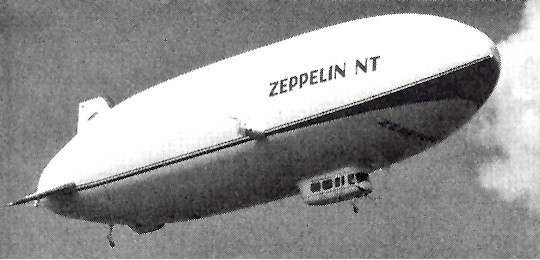
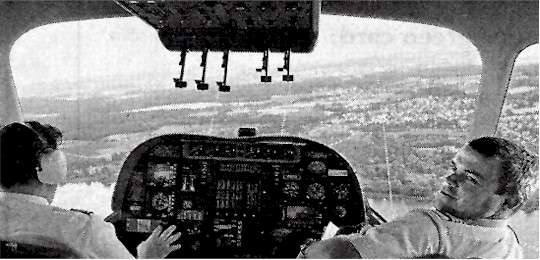
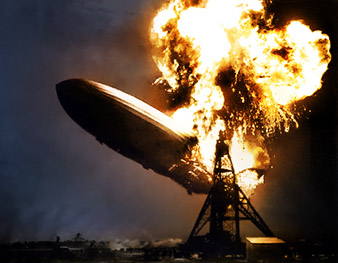

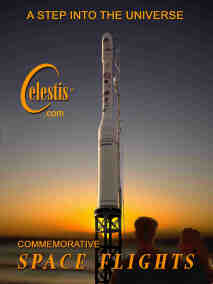 Since the time before recorded history people have looked to
the sky with wonder. When humanity first mastered flight we knew that our destiny lay in the heavens above. Space travel and exploration are our greatest
adventures - today and in the future.
Since the time before recorded history people have looked to
the sky with wonder. When humanity first mastered flight we knew that our destiny lay in the heavens above. Space travel and exploration are our greatest
adventures - today and in the future. For Celestis missions, each 7-gram sample of cremated remains is enclosed in a
personalised flight capsule. The capsules for a given flight are placed in a flight container that is attached to the upper stage engine of an Orbital Sciences Corporation
rocket. When the rocket is launched into space, it is the upper stage engine that takes the rocket's primary payload (such as a communication satellite) into Earth
orbit. Once in orbit the upper stage engine separates from the primary payload. The primary payload continues to orbit Earth. But so too does the upper stage
engine - with the Celestis flight container attached.
For Celestis missions, each 7-gram sample of cremated remains is enclosed in a
personalised flight capsule. The capsules for a given flight are placed in a flight container that is attached to the upper stage engine of an Orbital Sciences Corporation
rocket. When the rocket is launched into space, it is the upper stage engine that takes the rocket's primary payload (such as a communication satellite) into Earth
orbit. Once in orbit the upper stage engine separates from the primary payload. The primary payload continues to orbit Earth. But so too does the upper stage
engine - with the Celestis flight container attached.